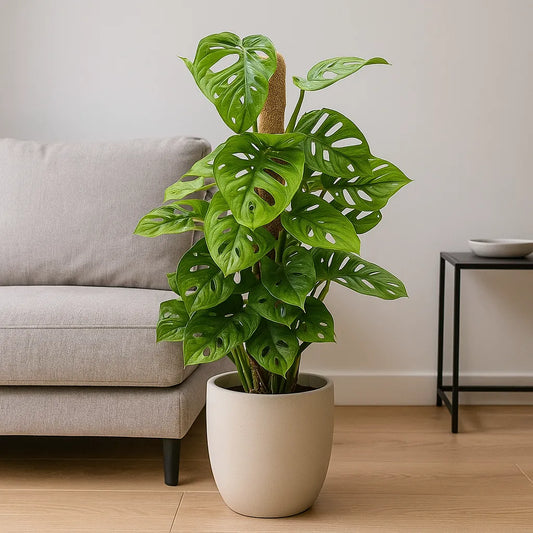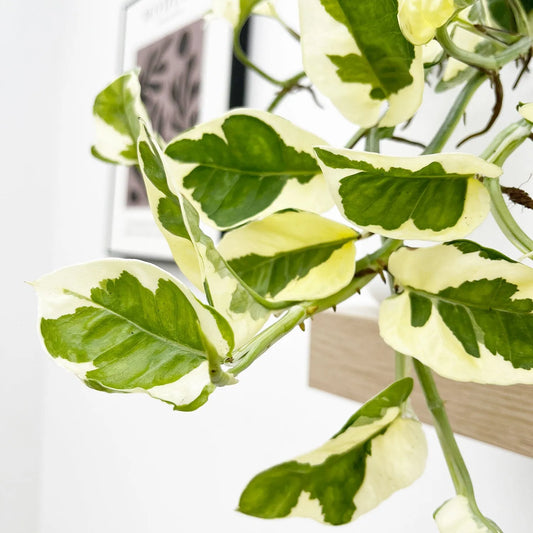Ficus sunlight requirements: A complete guide
The Ficus is a family of plants with around 800 recognised species. They grow in a range of colours, shapes and sizes, but they all have near enough the same basic needs: Water, humidity and sunlight.
Of all of these elements, the amount of sunlight your Ficus needs is possibly the most important one to get right. In this guide we will take you through everything you need to know about your Ficus and its sunlight needs.
Ficus Plants In The Wild
Ficus plants are native to the tropical regions of the world and are found mostly in southwest Asia and the Mediterranean. Although we use the Ficus as a houseplant in the UK, it is actually a species of tree and some varieties can grow up to 60 feet tall in the wild.
Due to their native habitat, Ficus plants have adapted to a warm and sunny environment, but they are adaptable enough to grow in colder conditions. When choosing a location for your Ficus, be it indoors or outdoors you should consider its natural habitat and how closely you can replicate it to give your plant the best conditions to thrive in.
Indoor Ficus Light Requirements
Growing a Ficus indoor is easy if you get the lighting right. Almost all indoor Ficus trees are smaller varieties that grow under the main canopy in the wild. This means that they like a lot of light, but the leaves can’t always handle strong, direct light.
As a result, you should put your Ficus in a location that receives bright, but indirect light throughout most of the day. This ideally means any light that comes through from an unobstructed south or east-facing window. These are just the ideal conditions though so don’t worry if you can’t meet them exactly, your brightest window will usually do the job.
You should avoid placing your Ficus directly opposite a window unless it has frosted glass or is covered by a blind that filters the light. The easiest way to test if the light is too intense or not is to lay your hand flat in the place you want to put your Ficus. If you feel a lot of heat the sunlight is too direct.
To get even growth on your Ficus plant, make sure to rotate your pot by 90 degrees every week to ensure that all sides receive a good amount of light. If you don’t do this you will find that your Ficus leaves begin to brown and die on one side and that plant will begin to lean towards the light source.
Outdoor Sunlight Requirements
Growing a Ficus outdoors is similar to growing one indoors when it comes to placement and sunlight. Make sure your Ficus is placed in a well-draining soil that is positioned to receive early morning and evening sun. Try to avoid a location that receives direct midday sun as it is too intense for the leaves to handle. If you can position your Ficus so that it is in the shade of a wall, larger tree or sail shade during the hottest part of the day.
What Happens If My Ficus Gets Too Much Light?
No matter if it's outdoors or indoors the most important factor is to make sure that your Ficus is not in direct or unfiltered sunlight. This light can be very intense and it will end up burning the leaves on your Ficus. The first sign of Ficus leaves burning is a slight yellowing of the leaf will slowly develop into a blister. The leaves will eventually fall off and the growth of the plant will slow. If you plant indoors you will need to be wary of the glass in your windows as it may amplify the light at certain parts of the day.
Signs My Ficus Isn’t Getting Enough Light
For tropical houseplants, making sure that they are getting enough light is one of the most important things you need to consider. The Ficus is a great plant to own because it tells you exactly what it needs unlike some other species. Here are the top things to look out for to tell if your ficus is getting enough light.
Slow growth - the Ficus is a naturally fast growing plant, and it gets most of this energy from sunlight. On average you can expect between five and ten centimeters of growth a month from your Ficus. If you are getting substantially less than this or you find that your Ficus is growing slowly then you may need to move it to a sunnier location
Leggy growth - when a Ficus isn’t getting enough light it will start to divert most of its energy into searching for new light sources. To do this it will put more energy into growing the stems rather than producing new foliage. When this happens you will see the space between the leaves begin to lengthen. This is known as leggy growth and is a sign that you need to move your plant into a sunnier location
Color difference on the leaves - this is more commonly seen in Ficus Lyrata plants. When the plant doesn’t receive enough light the leaves will begin to develop grey, dull spots on the foliage. These spots are usually only noticeable up close so they are usually something to look for after you notice some of the other symptoms.
Leaning towards windows - This is usually the first sign you will see that your Ficus needs more light. Your plant will bend and lean towards the nearest light source when it doesn’t have enough. When your plant does this, move it closer to the window. This can also happen if you are not rotating your pot regularly enough to get even growth. When you see your plant leaning, try rotating it more often first to see if this fixes the issue.
Will a grow light help your Ficus?
Sometimes it’s just not possible to simply move your Ficus into a sunnier location. You just might not have a sunny enough window or you might live surrounded by taller structures. If this is the case, it can be more difficult to grow Ficus plants, but it's not impossible.
In recent years the technology of grow lights has improved and are now able to support plants that aren’t getting enough light. These lights come in a variety of shapes and forms from bulbs that fit in table lamps to small portable LED’s. This means you can easily find a grow light that will suit your needs.
A grow light is a specially created light that replicates sunlight, especially the parts of it that help to feed and maintain a plant. How much you use the light and when is up to you and may take a bit of trial and error but we would recommend placing it in a place that allows it to shine over most of you plant and to have it on when the plant is naturally exposed to light (you can easily achieve this with a timer). During autumn and winter you can use your light to supplement the lower light levels and continue consistent growth throughout the year.











Leave a comment
Please note, comments need to be approved before they are published.